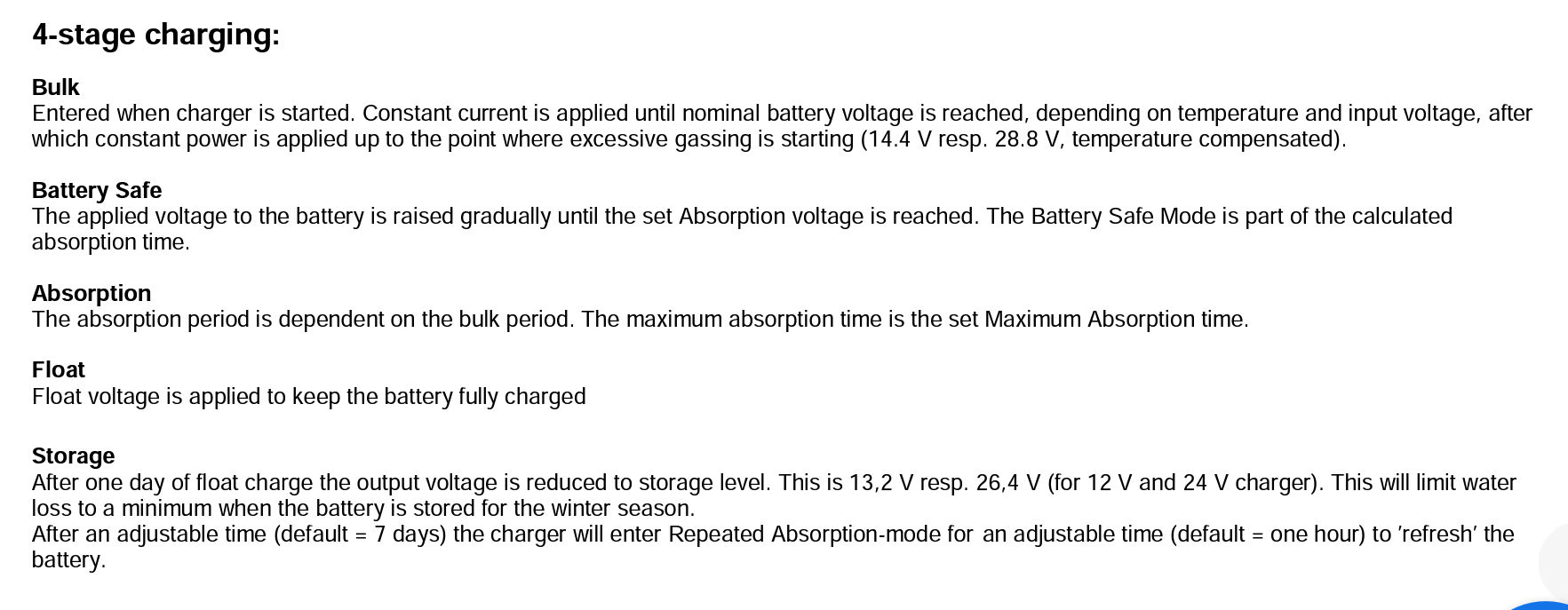Occasionally, for various reasons, I find it preferable to force a Multiplus from Float back into Bulk.
I understand that it will do this automatically when configured for "Lithium Battery" at a delta of {0.2V, 0.4V, 0.8V} below the configured float voltage for the {12V, 24V, 48V} charger.
But, if I wanted to force it to bulk anyway, regardless of the voltage, without resetting it and losing the pass-through/inverted output, is this possible? Has anyone come up with a trick to convince it to switch back?
I am aware of the special "forced absorption" toggle switch operation. I am looking for essentially the same thing, but for "forced bulk."

